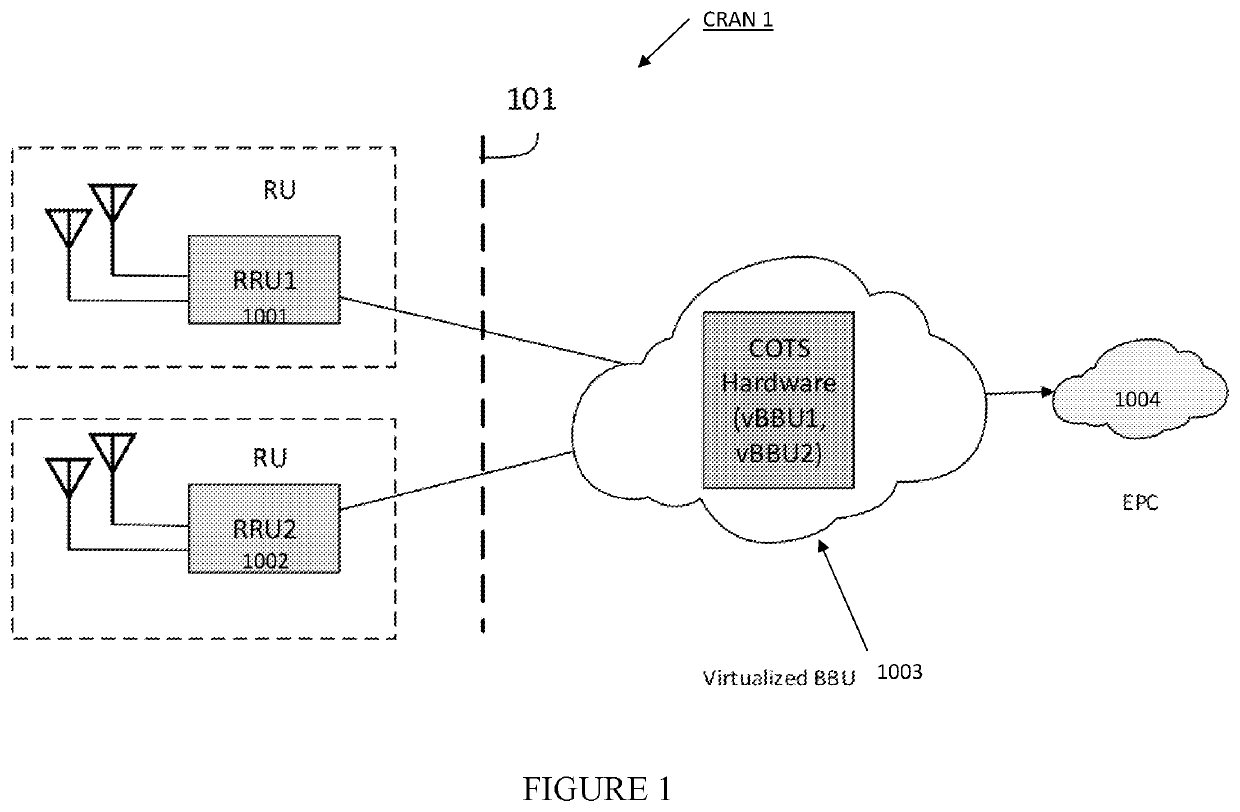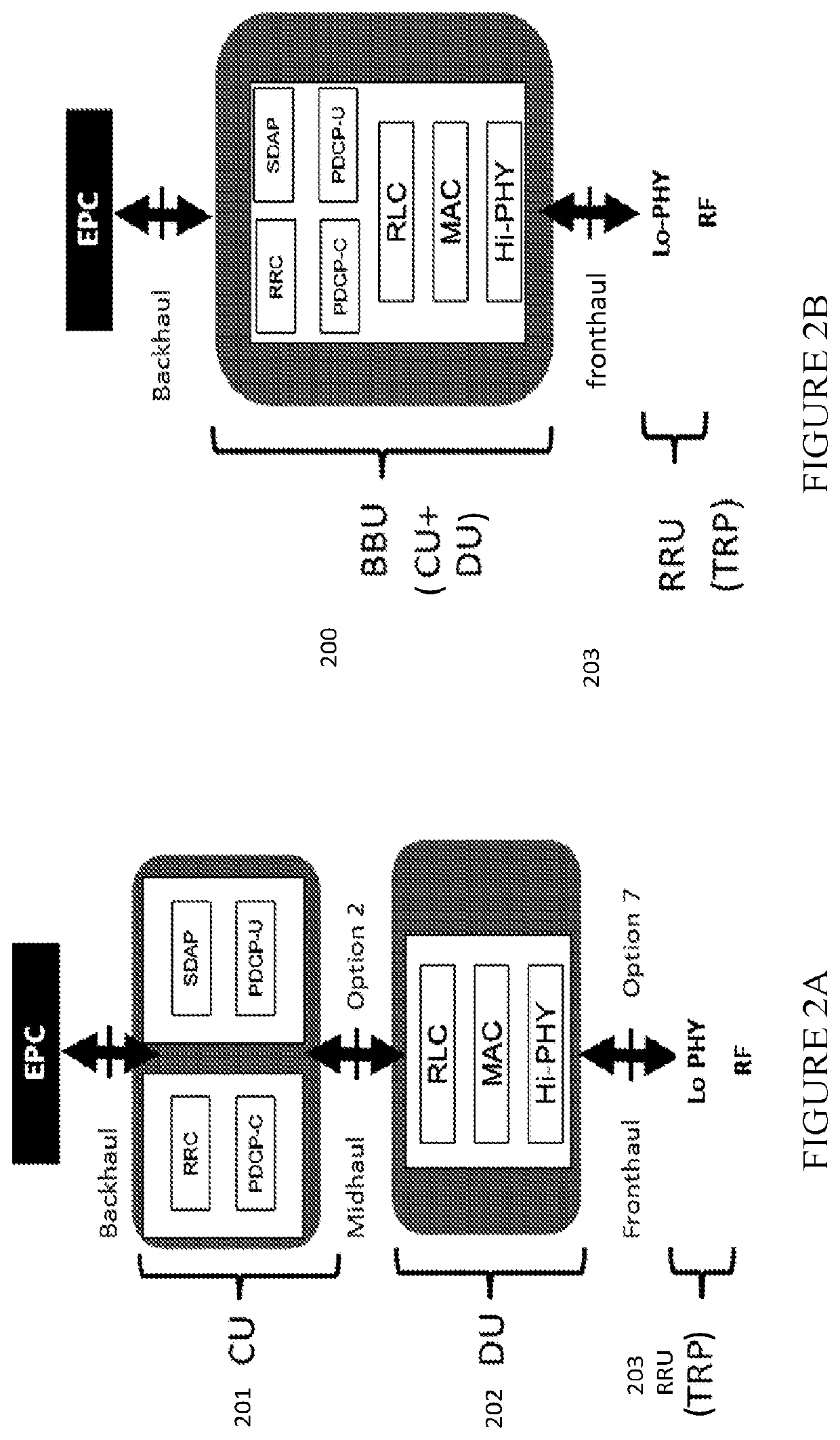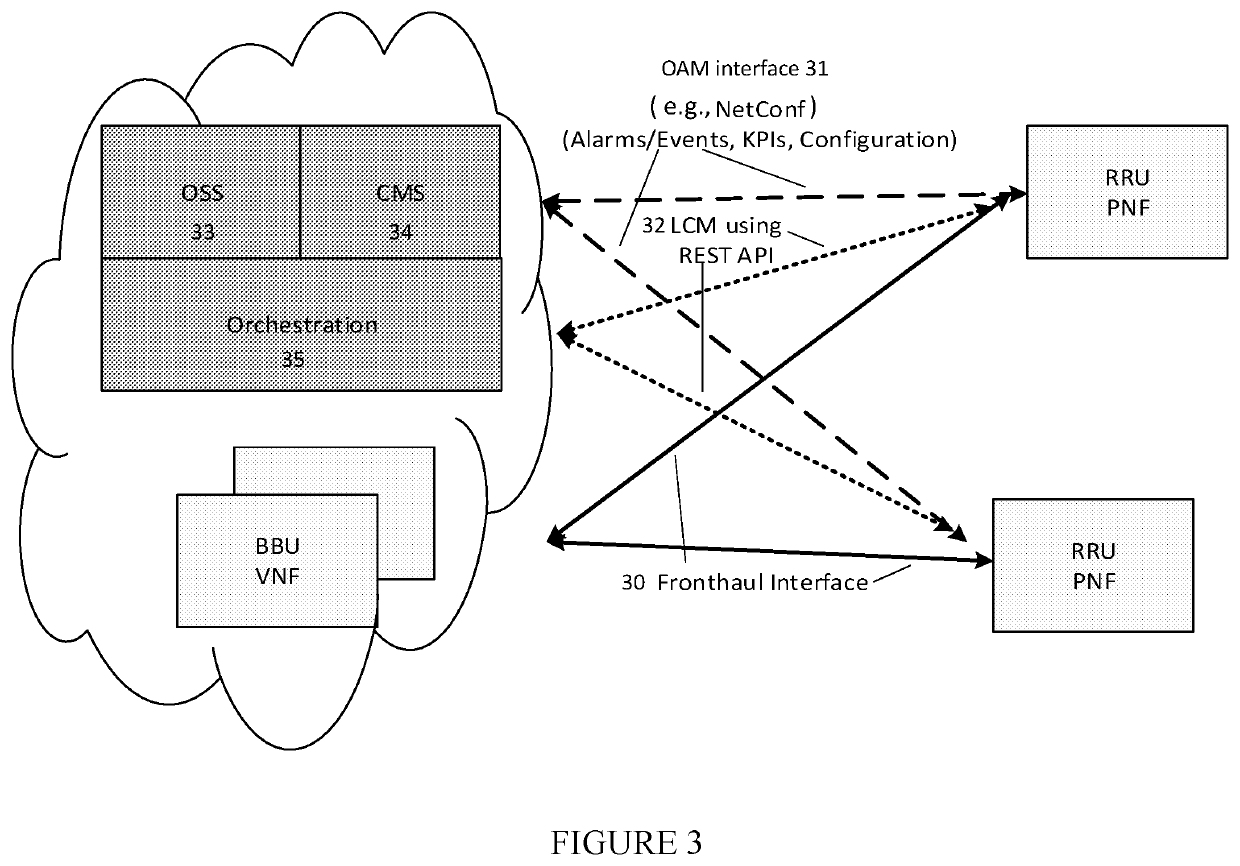Method and apparatus for flexible fronthaul physical layer split for cloud radio access networks
- Summary
- Abstract
- Description
- Claims
- Application Information
AI Technical Summary
Benefits of technology
Problems solved by technology
Method used
Image
Examples
case 1 (shown in fig.19)
Case 1 (shown in FIG. 19): Tx Diversity 1-CRS Port Ant0, 1 PRB
At DU:
[0202]For TxD case, d(q)(0), . . . , d(q)(Msymb(q)−1) M_q_sym modulation bits belonging to PDSCH ANT0 are packed into a PRB. All CRS REs for ANT0 are packed into a PRB for transmission and are unpacked at the RU.
At RU:
[0203]At RU, for single antenna port TxD, single layer is used, and mapping is defined as:
x(0)(i)=(0)(i)[0204]RU needs to map CRS into antenna ports.
case 2 (shown in fig.20)
Case 2 (Shown in FIG. 20): Tx Diversity 2-CRS Port Ant0, Ant1, and 1 PRB
At DU:
[0205]For TxD case, d(q)(0), . . . , d(q)(Msymb(q)−1) M_q_sym modulation bits belonging to PDSCH are packed to into a PRB. All CRS REs for ANT0, ANT1 are packed into a PRB for transmission and are unpacked at the RU.
At RU:
[0206]At RU, for two antenna port TxD, 2 layers are used, and mapping is defined as:
x(0)(i)=d(0)(2i)
x(1)(i)→d(0)(2i+1)[0207]For TxD, information for 2 layers are packed into a PRB for transmission and are unpacked at the RU. At RU, after layer mapping and precoding, CRS sequences for 2 antenna ports are mapped to the appropriate RE position, and the rest are left blank.
case 3 (shown in fig.21)
Case 3 (Shown in FIG. 21): Tx Diversity 4-CRS Port Ant0,1,2,3 and 1 PRB
At DU:
[0208]For TxD case, d(q)(0), . . . , d(q)(Msymb(q)−1) M_q_sym modulation bits belonging to PDSCH are packed to into a PRB. All CRS REs for ANT0, ANT1, ANT2, ANT3 are packed into a PRB for transmission and are unpacked at the RU.
At RU:
[0209]At RU, for two antenna port TxD, 4 layers are used, and mapping is defined as:
x(0)(i)=d(0)(4i)
x(1)(i)=d(0)(4i+1)
x(2)(i)=d(0)(4i+2)
x(3)(i)=d(0)(4i+3)
[0210]For TxD, REs for 4 layers are packed into a PRB for transmission and are unpacked at the RU. At RU, after layer mapping and precoding, CRS ports for 2 antenna ports are mapped to the appropriate RE position, and the rest are left blank.
PUM
 Login to View More
Login to View More Abstract
Description
Claims
Application Information
 Login to View More
Login to View More - R&D
- Intellectual Property
- Life Sciences
- Materials
- Tech Scout
- Unparalleled Data Quality
- Higher Quality Content
- 60% Fewer Hallucinations
Browse by: Latest US Patents, China's latest patents, Technical Efficacy Thesaurus, Application Domain, Technology Topic, Popular Technical Reports.
© 2025 PatSnap. All rights reserved.Legal|Privacy policy|Modern Slavery Act Transparency Statement|Sitemap|About US| Contact US: help@patsnap.com



